Low Engagement on Instagram? Here’s Why
Check out the top 4 reasons for low engagement on IG and what to do.


Julian M
Guest Writer @ Quorage
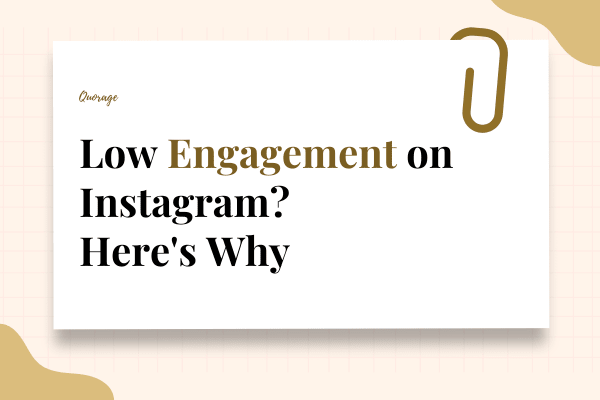

Low engagement on Instagram is typically caused by platform saturation, formats that Instagram doesn’t prioritize, ghost or fake followers inflating your follower count, and irregular posting habits.
Each of these factors signals to the platform that your content isn’t valuable enough to push widely.
All you have to do is incline to carousels and reels to drive saves and shares, purge inactive followers, and commit to a consistent posting rhythm. This way, you keep your audience and the algorithm engaged.
Every Instagram post, Reel, or Story reflects hours of your thought, effort, and creativity. Yet when you click publish and it goes live, the response is almost invisible. Comments are scanty. Story views fade into obscurity.
You check: Your followers still exist, Instagram flourishes, yet an indifferent algorithm downs your content. I get it. This low engagement on Instagram can be disappointing, especially when the effort you pour into your account is significant.
Thankfully, this can be remedied.
Understand what suppresses your engagement, and then implement techniques to regain attention and meaningfully connect with your audience. This is what this guide is all about. To help you boost your low engagement on Instagram.
Read on to understand the slow Instagram activity and how to address it.
Reason #1: Instagram content saturation
Instagram feeds are saturated with millions of posts uploaded daily, making it more difficult for a single post to attract engagement. Even quality posts may get lost unless they generate signals that Instagram values. So, focus on formats that Instagram prioritizes, be specific in your niche, encourage people to share your posts, and ensure your hook sparks engagement.
Meta announced a week ago that Instagram garnered 3 billion active users in 2025. From a content creator’s perspective, the growth sounds promising. But, it creates a computational problem: the feed hasn’t expanded, content competition has.
But how?
Keep in mind that Instagram’s ranking structure prioritizes “likely to engage” content for every user.
Let me explain this.
Before Instagram scores and ranks content for display on the Explore page, it first goes through filtering. This includes a series of signals and predictions based on the popularity of your posts. So, when more posts compete, the algorithm rigorously filters the content, meaning a greater percentage of your audience may end up not seeing your posts if it’s not popular.
Besides this algorithm effect, user attention can also play a critical role. On average, people spend approximately 1.6 hours per day on Instagram, a figure that hasn’t grown significantly.
This means that more posts get compressed into this time frame, decreasing the odds of your post earning attention.
Take a look at this post on Reddit, 6 days ago, where a creator is frustrated about their Instagram getting less engagement metrics.
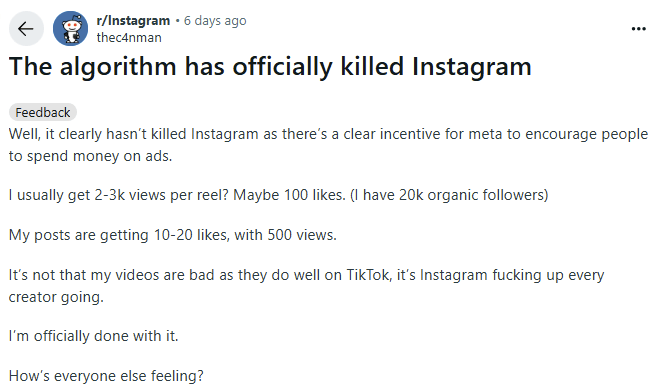

Clearly, the low engagement on Instagram isn’t commensurate with the creator’s 20,000 followers, even with the fact that the number of Instagram users has increased.
The truth is, increasing content volume with stagnant user time intensifies competition for each minute. This could explain why, despite the rising number of users, Instagram’s engagement dropped between 2024 and 2025.
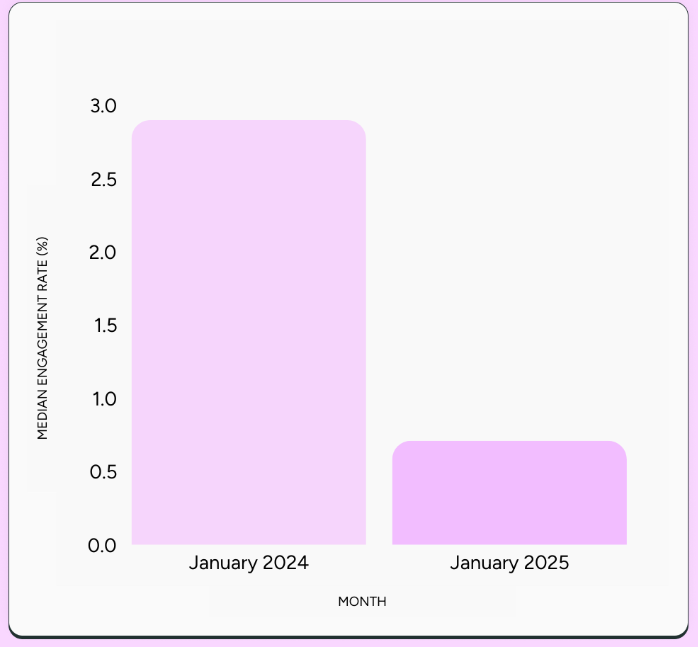

Let me emphasize that low engagement in this context doesn’t naturally signify that your content is poor. Instead, it reflects a systemic saturation issue where:
- Each post competes with a larger content volume
- A single user’s time is split across creators
- The algorithm magnifies this competition by prioritizing formats within its finite distribution space.
What you can do about Instagram content saturation
Here’s how you can boost engagement on Instagram despite content saturation:
- Focus on formats that Instagram prioritizes. Currently, carousels and Reels receive priority distribution. So, posting more of these increases your odds of visibility and engagement.
- Carve out a niche for your content. Broader content tends to lead to more competition. Focus on a specific style or topic to train the Instagram algorithm to recommend it to a smaller but more relevant group of users who are likely to engage.
- Encourage shares and saves. Include simple CTAs such as “Save this for later” or “Share with a friend who needs this” to magnify your post longevity. These also help your posts stand out from the competition, as they carry a heavier weight than shares.
- Refresh your hook. Utilize strong open visuals and captions within the first 1-2 seconds to boost dwell time. For visuals, you can bold your graphics with text overlays, use high-quality product shots, or expressive lifestyle photos that communicate your context at a glance. For captions, you can use questions that fuel curiosity. For example, “Have you ever wondered why…?” You can also use compelling facts or direct statements that drive value.
Here’s an example of a hook with great visuals and captions.
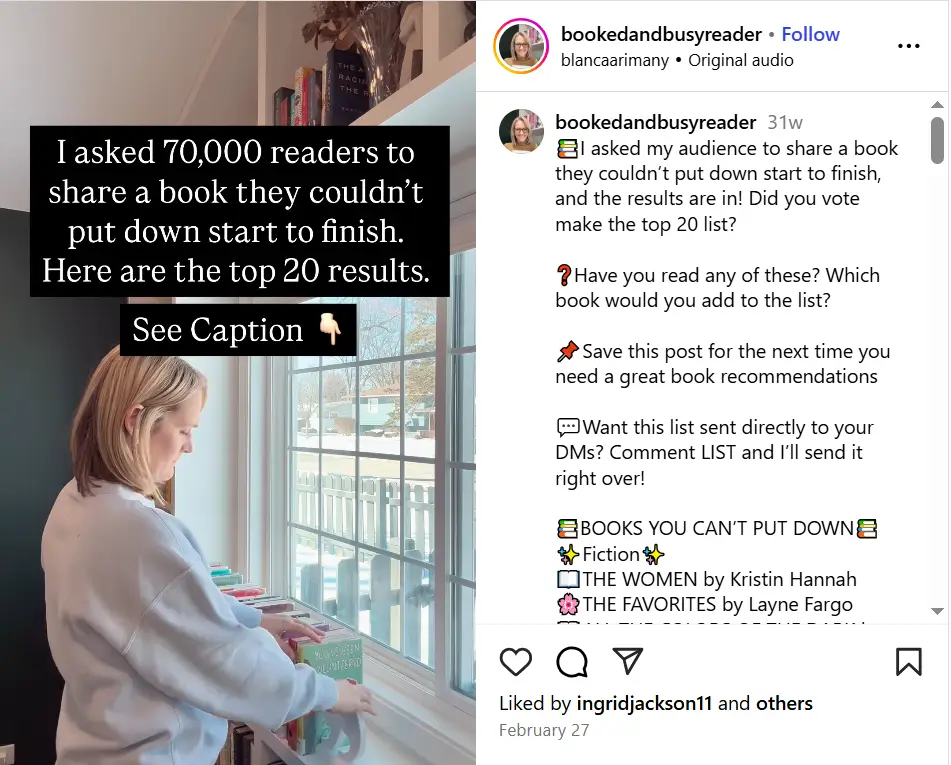

The Instagram post encourages users to save it for future reference. It also displays a synopsis of what the post is all about, with a specific niche on book readership.
Reason #2: You use the wrong post format
Carousels and Reels drive better engagement compared to single-image formats. To stay visible, mix the formats strategically. You can use carousels to drive deeper engagement through shares and saves, Reels to discover and reach new audiences, and Stories to maintain daily visibility.
Remember those days when Instagram was the photo-first app? That dynamic has changed. Platforms that feature a higher volume of video content have grown rapidly in popularity. TikTok is one of them, with 1.12 billion active global users, capturing a significant share of the market.
If you’re still using single-image posts, you’ve likely seen a dip in your likes and reach, or worse, no engagement on Instagram. It’s not necessarily that you have bad content. It’s just that your post’s format is not in sync with the platform’s current priorities.
It is worth pointing out that:
- Single-image posts have the lowest engagement of 0.45% across formats.
- Carousels command reach with 0.55 % engagement by driving more comments, saves, and swipe-throughs.
- Reels get 0.5% engagement by funneling followers and sparking growth.
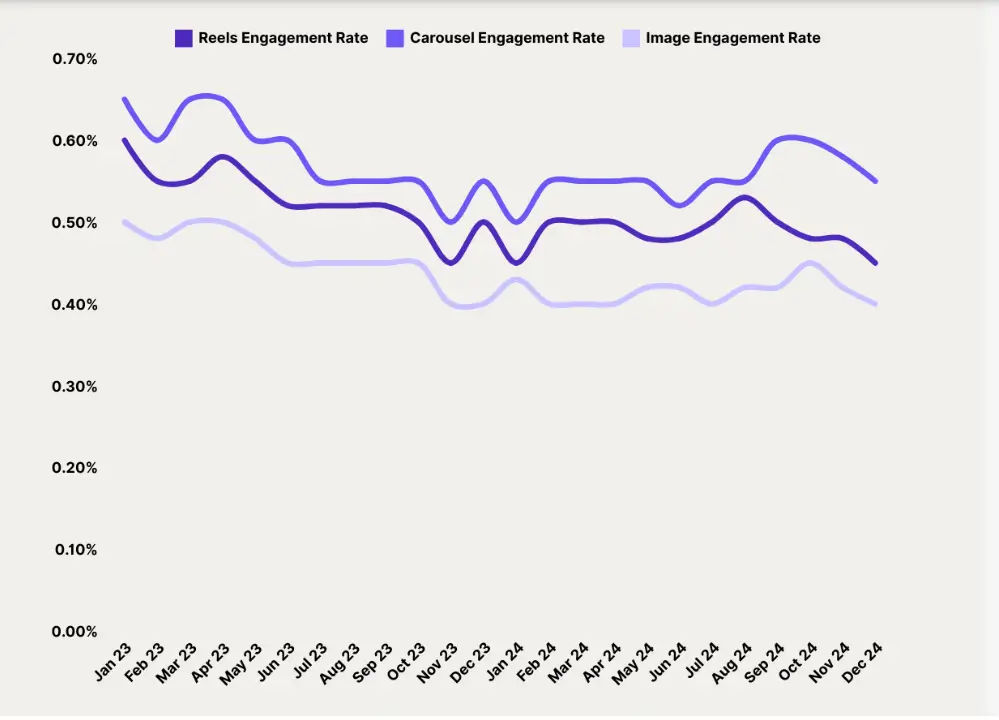

Let’s be real. Instagram rewards content that engages users and keeps them watching or interacting longer. Trust me, a lone static photo just doesn’t compete.
Don’t take my word for it.
Here’s Adam Mosseri, the head of Instagram’s take on Instagram carousels, and why they get more reach than static images:
“One, multiple pieces of media are going to mean more interactions with your carousel posts, and more interactions is going to mean more reach on average. And two, if someone sees your carousel post but they don’t swipe, we’ll often give that carousel a second chance.”
Even better;
In this case study, the brand utilized user-generated content (UGC) through Instagram Reels to engage with its followers. The reel got impressive engagement, with over 1.8 million reach, 408 comments, 1.3k shares, and 179 saves.
But why does the algorithm behave this way?
Instagram is optimized for user retention and depth of attention. Reels maximize watch time and carousels maximize interactive engagement. Images offer little beyond a scroll past or likes, which is why they get less priority.
How to choose the right Instagram post formats
- Examine your content blend. If your grid comprises more single images, then that explains the drop in your engagement.
- Incline to Reels to discover and nurture new followers
- Use carousels to boost low Instagram engagement and retain loyal followers
- Repurpose your ideas across formats to maximize engagement and reach. For example, you can spin one carousel into a short reel without extra work.
Reason #3: You have ghost and fake followers
Ghost and fake followers lower your post engagements because they never interact, weakening your like and comment ratio in the face of the algorithm. To fix this, periodically audit your audience to remove inactive or suspicious user names. You can use Instagram’s “Restrict” or “Block” follower features or manually purge them.
Hold up. Have you ever audited your followers? How many of them are real?
Did you know that 40% of all Instagram activity was fake? This includes bots and fake accounts.
Get this. If your follower base consists of these “ghosts,” your engagement rates will drop. Worse, your post won’t get pushed further by the Instagram algorithm if the bots never interact with it.
A creator shared on Reddit how their likes and shares increased after purging ghost followers. Here’s the post.
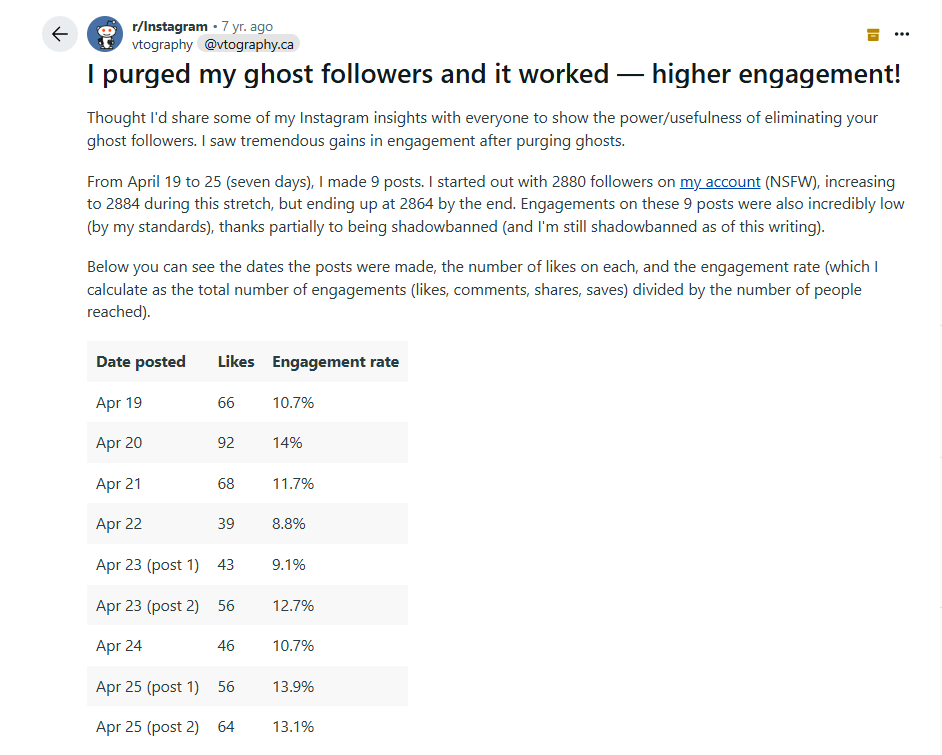

Elsewhere, in a YouTube walkthrough, an influencer documents how she noticed a significant increase in engagement and reach after removing fake Instagram followers.
Keep in mind this isn’t anecdotal. Instagram acknowledges the scale of the issue, with an ongoing effort in place to purge inauthentic likes, follows, and comments.
You can choose to be proactive and purge the entire accounts from your list of followers to optimize your engagement.
What you can do about fake Instagram followers
- Analyze your followers using Instagram Insights or third-party analytics tools.
- Manually purge obvious ghost accounts. You can also strategically use “Block” or “Restrict” Instagram features. Simply open the ghost follower’s profile, then click on the the three dots next to the “similar accounts” icon. You’ll see the options to Block or Restrict them.
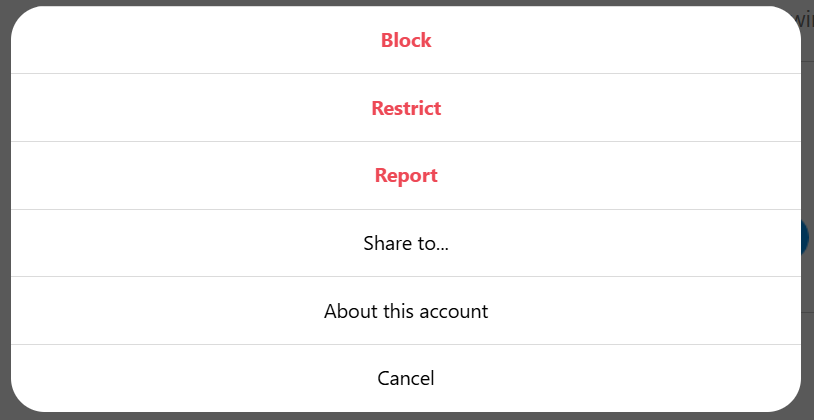

- Build a smaller but genuine audience that actually engages. The focus is quality over quantity.
Reason #4: Your posting frequency is inconsistent
Instagram prioritizes recency and consistency. Inconsistent posting lowers visibility in feeds and breaks audience habits, minimizing their chances to engage. To fix this, set up a reasonable posting schedule and stick to it. Posting stories daily and three feed posts a week is ideal. Otherwise, use another posting rhythm you can sustain.
Frequent and consistent posting signals that your account is active, whereas uneven posting can make the algorithm deprioritize your content in Explore and Feeds.
In one of Instagram’s posts, they note that maintaining a consistent posting schedule keeps your audience engaged and boosts your Instagram success.
A recent study by Buffer shows that accounts that post frequently get more views on each piece of content. Strikingly, the highest jump occurs when you move from posting 1-2 times each week to 3-5 times.
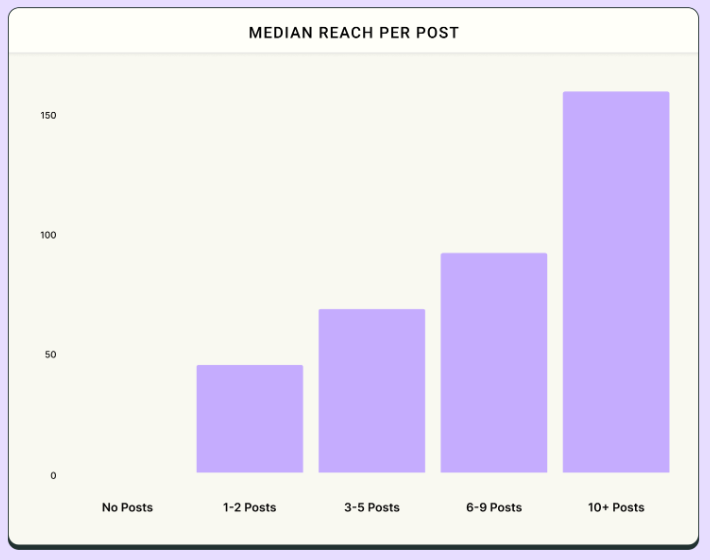

The bottom line is that Instagram rewards consistency. Let me add a caveat here. More doesn’t always signify better. The key thing is to ensure your content is of high quality and to use a mix of content formats to maximize its impact.
Now that you know about frequency, when is the best time to post on Instagram?
DashSocial analyzed 2 million Instagram posts, Stories, and Reels, to find out the best time for your brand to post on Instagram. Take a look at the survey results for each recommended posting day and time.
| Day | Time |
| Monday | 11 p.m. |
| Tuesday | 3 a.m. |
| Wednesday | 2 a.m., 1 p.m. |
| Thursday | 10 p.m. |
| Friday | 10 p.m. |
| Saturday | 10 p.m., 11 p.m. |
| Sunday | 11 p.m. |
Here are the global engagement rates your brand can expect to gain by hour and day.
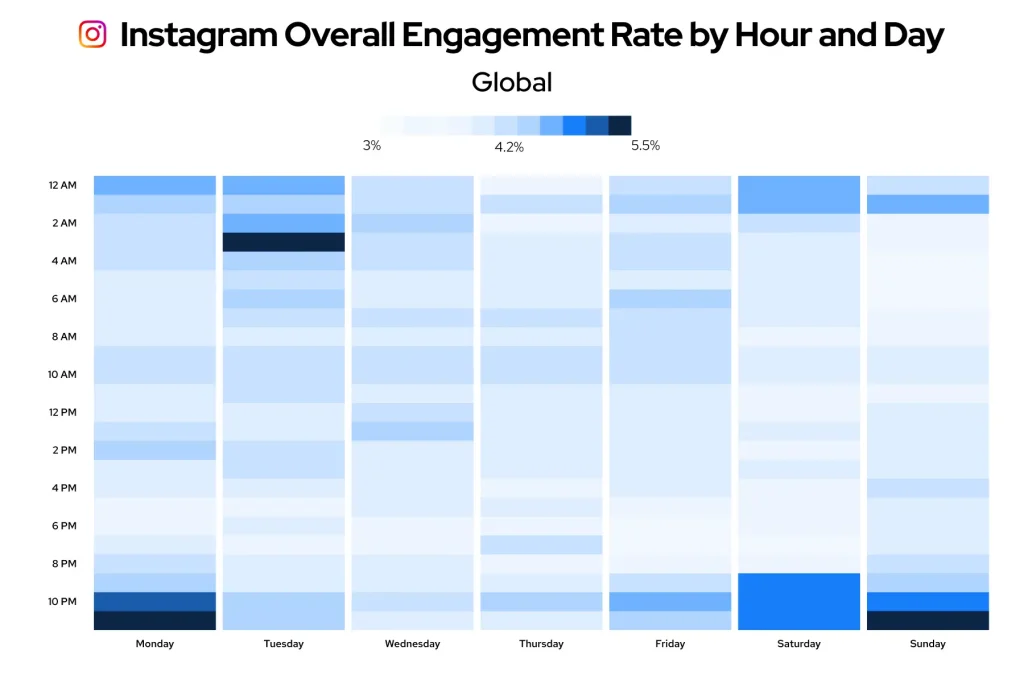

What you can do about inconsistent posting frequency
- Maintain a regular posting cadence. For example, 3 to 5 feed posts per week plus daily Stories, posted at the same time every time.
- Schedule Instagram posts beforehand to stick to a consistent schedule
- Use insights to test posting times and days for your followers
Further reading: Does scheduling Instagram posts lower engagement?
Reclaim your Instagram engagement
Low engagement on Instagram is a signal. It informs you where your content, approach, or audience engagement can improve. Each Reel, Story, or post is a chance for you to test, learn, and streamline. To wade the waters, audit your followers, strategically test formats, and establish a consistent posting rhythm, especially when your audience is active.
This way, you transform frustration into insight. And your question on “why is my engagement so low on Instagram” becomes a myth. With calculated actions, your Instagram becomes a platform where your content is consumed by the right audience, fueling constructive interactions and real growth.

